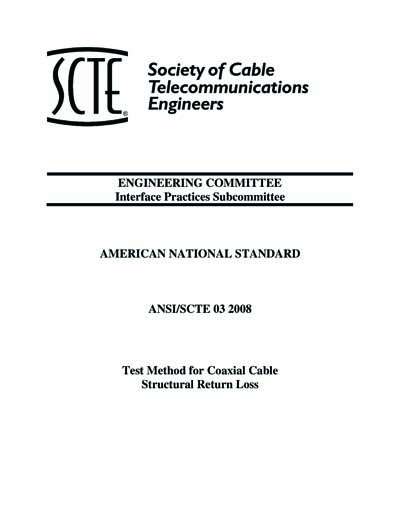Historical
ANSI/SCTE 03 2008
Test Method for Coaxial Cable Structural Return Loss
1.1.1 The purpose of this procedure is to provide instructions to measure cable structural return loss (SRL). There are two test methods presented, as the accuracy, ease-of-use, and required test equipment differs for each test method. The two methods, with their major advantages and deficiencies, are described below:
1.1.2 Variable Bridge Method: The return loss of a cable is measured, while varying the impedance of a reflection bridge, until the return loss is minimized. This method requires simple, magnitude only (scalar) measurements, but is subject to errors from the cable connection, and operator skill.
1.1.3 Fixed Bridge Method: The cable impedance as a function of frequency is calculated from a vector (magnitude and phase) return loss. The average of this impedance across the desired frequency range is the 'cable reference impedance.' The structural return loss is calculated from the cable impedance as a function of frequency and the cable reference impedance. This may be automated, but requires a vector network analyzer, and may be subject to errors due to the cable connection
Content Provider
The Society of Cable Telecommunications Engineers [scte]






